Unlike other brewed alcoholic products, sake brewing is characterized by the process of steaming white rice and cooling the steamed rice called “cooling” depending on the purpose.
Before the brewing process was modernized, the sake brewery was built in a north-south direction to let the outside cold air into the brewery in the winter, and a ventilation window called a "ground window" was installed on the side of the brewery wall to easily receive the northwest wind. The outside air was let in, the room temperature was adjusted, and the steamed rice spread on the woven mat was exposed and cooled.
In the 1950s, a machine called a "steamed rice cooler" was developed at Fushimi's brewery "Gekkeikan: Okura Sake Brewery" as the first challenge to modernize sake production.
The worker spreads the steamed rice with a thickness of 10 cm on a nylon net covering over the wire-mesh on the conveyor of the machine. The air layers are created in the steamed rice by this way. The heat of the steamed rice is gradually cooled by the blower while the steamed rice is moving inside the machine.
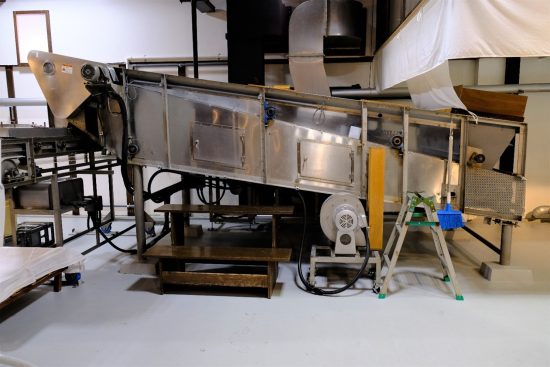
Photo: “Steamed rice cooler” at 7:40 AM on February 14, 2021
The "cooler" is equipped with a "Steamer" on the right hand. Steamed rice is spread on a rising slope conveyor and cooled gradually by stirring.
The cooling capacity per hour depends on the width of the net instead of the length.
Cooling efficiency also depends on the room temperature and humidity on the day, but the biggest advantage of operating in winter is the "absolute humidity", which is the amount of water retained in the air.
The cooler required for sake brewing is (1) efficiency to lower the temperature of steamed rice, and (2) temperature control capability to suit each work category of rice.
Therefore, variable machines that can control the cooling temperature and the rotation number of the cooling fan have developed and evolved in recent years.
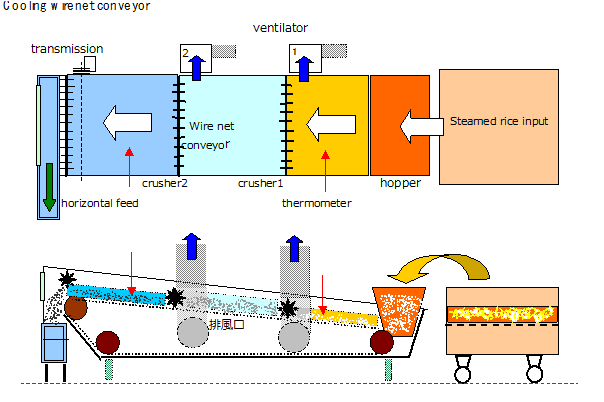
Changes in the air layer of rice grains

Due to the evolution of the shape of the net, cracked rice grains are no longer clogged in the mesh.
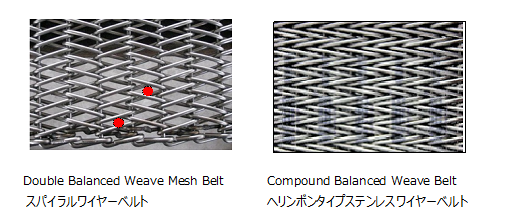
The analysis of the steamed rice cooler from the psychrometric chart
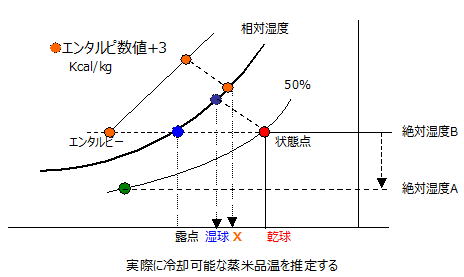
Q.1 What minimum temperature can the cooler cool the steamed rice to?
A.1 The tips are in the "dry hygrometer" used in the specialized room for producing Kōji. When the room temperature is 30 degrees and the wet bulb is 20 degrees, the difference in dryness and humidity is 10 °C. At that time, the relative humidity in the room is RH 39.3% ≒ 40%.
A.1-2 In the room whose room temperature is set at 30 °C and the wet bulb is set at 20 °C, the heat in the substances is drawn away from the surface of the wet-bulb by the latent heat of vaporization. The steamed rice on the cooler in the brewery whose room temperature is set at 10 °C and a wet-bulb is set at 6 °C and relative humidity RH is set 54.3%, is cooled while the surface moisture evaporates. Therefore, the temperature of steamed rice drops to room temperature. Furthermore, the boundary film on the surface of steamed rice is removed by wind and stirring, it could drop to the wet-bulb temperature at room temperature which is 6 °C. That is the answer.
A.1-3 Actually, we read the value of enthalpy from the room temperature (state point), and increase the value of plus 3 degrees, and draw a line to 100% relative humidity, and lower it further, the results can be shown. However, we predict around 7 degrees on site after 1 degree the relative humidity is added.
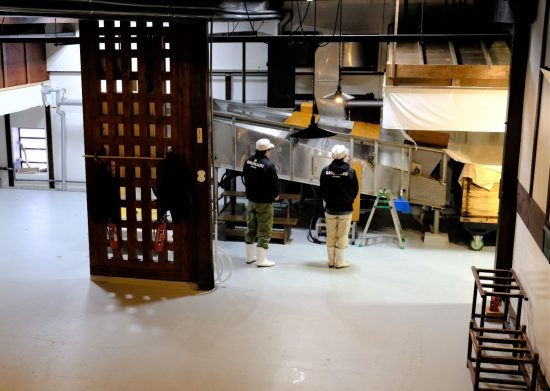
Photo “Cooling” at 8:10 AM on February 14, 2021
Q.2 We want to know the content of the work and the time called "cooling" to cool the steamed rice
A.2 The person in charge will prepare the cooler at 6:40 AM after transferring the soaked rice into the first steaming basket. He removes the cover that was hung the day before, starts the conveyor, and then adjusts the room temperature to a speed that matches the cooling conditions of steamed rice scheduled using the inverter transmission.
A.2-1 The first steamed rice is complete at 7:40 AM, the steamed rice is transferred to the cooler connected to the steam basket, and the actual cooling work is started.
Depending on the temperature every morning in the brewery and the next process different with rice types such as for koji or kake rice, the speed of the conveyer and the air volume of the blower can be adjusted to the actual temperature of steamed rice. The operators adjust the steamed rice with the feel of his hands, and the work is called "Sabake".
The daily working hours and the properties of steamed rice change depending on the target temperature of the steamed rice.
In the lunar calendar, February is called "Kisaragi". The season is getting cooler and it is the time of midwinter.
However, there is a seasonal difference between the lunar calendar (the lunisolar calendar) and the new calendar (the solar calendar).
The seasonal boundary called "Setsubun" when changes from winter to spring in 2021 was February 2 due to the adjustment of the calendar. The beginning of spring was February 3rd.
The first warm and strong south wind in Fushimi blew after the beginning of spring on March 1. This strong wind indicates that spring has come and is called ”the first gale of spring”.
When we stroll around the town, we find "Hina dolls" are displayed in the shops on the street as if they are waiting for spring. On March 3rd, we call it "Doll's Festival" traditionally and pray for the healthy growth of girls. We will decorate the room with "Hina dolls", and enjoy drinking "White Sake" with all family.
Spring in this year came early, and the cherry blossoms along the river in Fushimi were already in full bloom at the end of March.
年年歳歳花相似 歳歳年年人不同 (Liu Xiyi, Tang dynasty poet: 651-679)
Although the flowers bloom in the same way every year, but the human behavior changes from year to year even if it seems never to change
We have been studying Chinese "Chinese poetry" for a long time.
We can feel the arrival of spring from the trees that have fallen leaves in the fall, receive the full light of spring over the winter, and the trees that have bloomed and the cherry blossoms that have grown young leaves.
COVID-19 has changed our daily lives significantly. We don't wear masks at home, however, everyone who goes out wears masks.
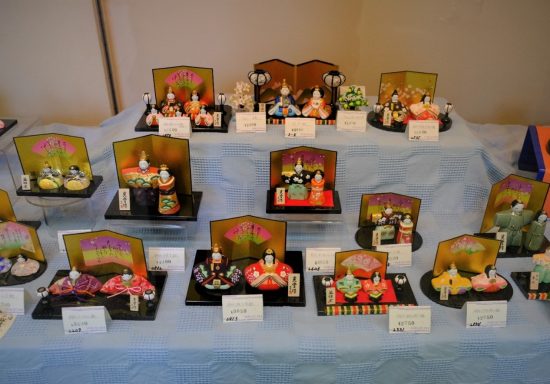
Photo: Hina dolls "emperor and empress dolls" on Fushimi Otesuji shopping street on February 4, 2021
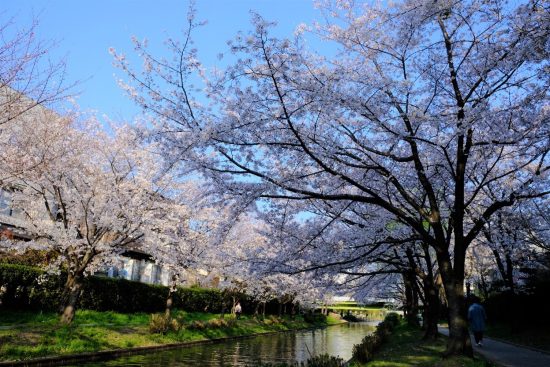
Photo: The cherry blossom trees along Fushimi "Horikawa" is in full bloom at 16:30pm on March 23, 2021
The reason why people are fascinated by cherry blossoms is that it has been believed since ancient times that the goddess of rice cultivation dwells in the petals of cherry blossoms. The blooming of cherry blossoms in Japan, which stretches from north to south, has signaled the time to start rice paddy plowing called "Taokoshi," which is a preparation for the year's rice cultivation in each land. The cherry blossoms, where the goddess is said to dwell, are now in full bloom.
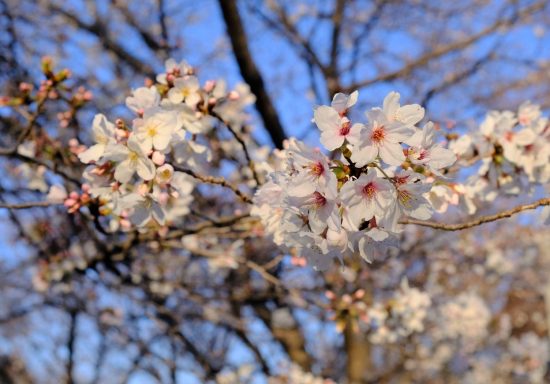
In addition to cherry blossom viewing in Kyoto, the "bamboo shoot" are also recommended.
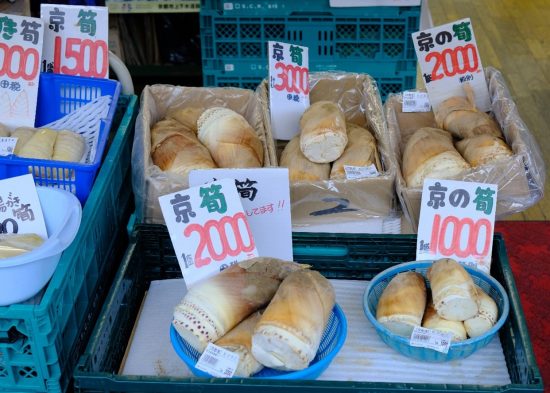
COLUMNEssay
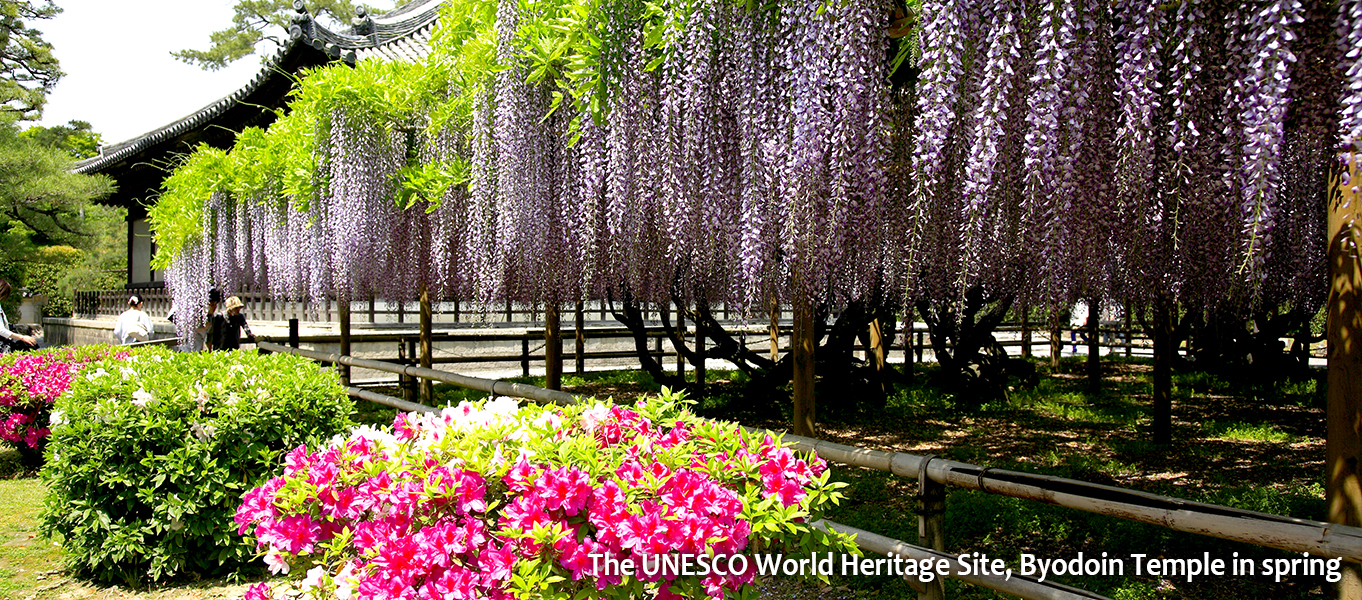
Essay
Scenery from the sake brewery - 009 Cooling
Monthly photo essay on Japanese sake brewing by Mr. Keiichiro Katsuki, a Japanese sake brewing expert.
Please refer to episode 001 for more information on the author.





